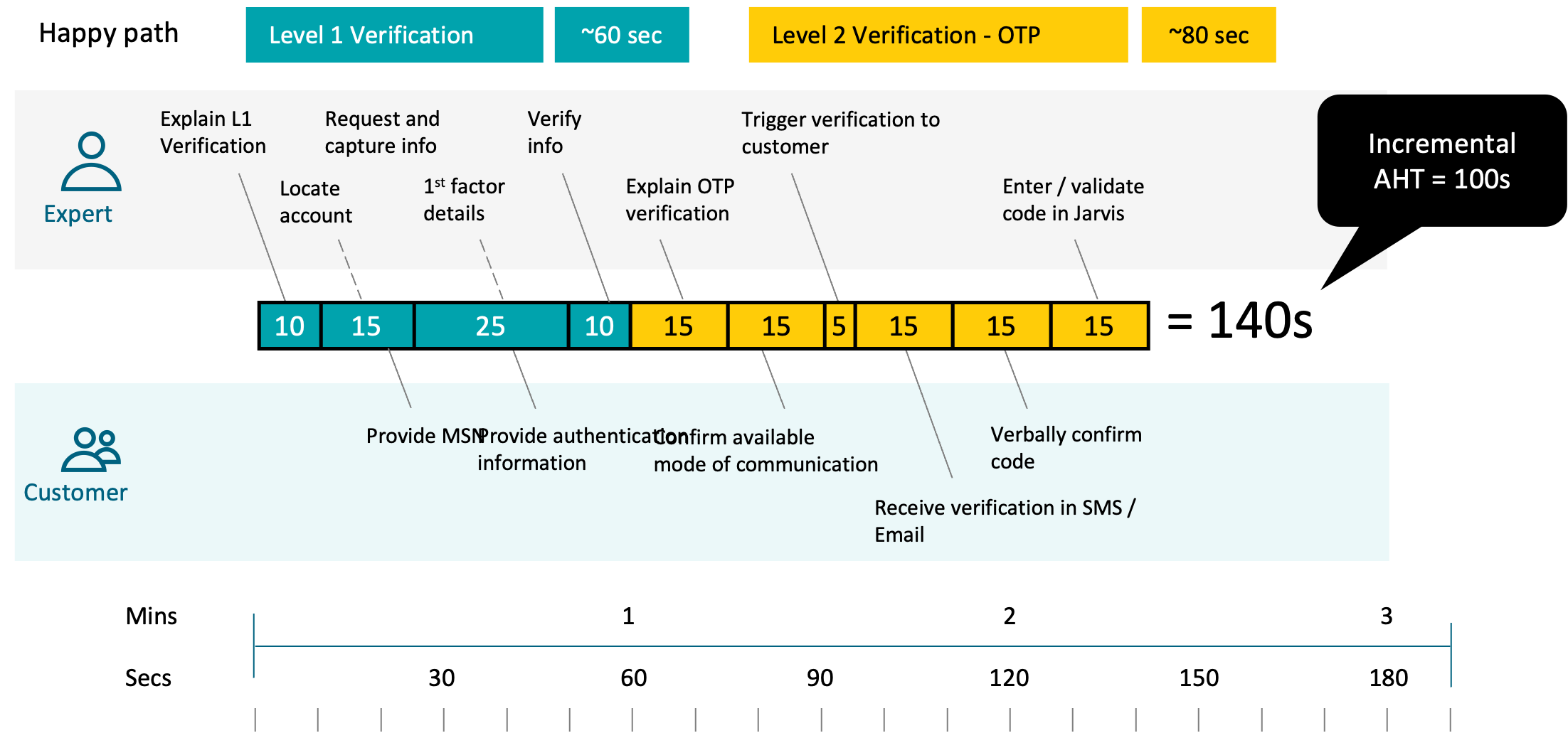
Voice AI Authentication
AI automated note-writing tool for Contact Centre voice experts,
the first step to our 3-year AI strategy.
Project Overview
As we transition from input-based to spoken Interactive Voice Response (IVR) on the Optus hotline (133 937), we’re leveraging Voice AI to greet customers, capture intent, and authenticate their identity. This project focuses on the authentication process.
Role:
UX/UI, Conversation Design
The team:
Google developers and conversation designers
Product Manager
Tech lead
Timeframe:
Apr - June 2022
Success metric:
Average handling time - authentication
Target outcome:
Reduce authentication handling time by 50 seconds.
Authentication success rate of 40%.
The problem
Authentication in every call is repetitve
Whenever customers call Optus, our experts have to authenticate them before opening up their account. The authentication process is even more complicated now with ACMA introducing Multi-Factor Authentication (MFA), which takes 140 seconds for both customers and experts.
Outcome
Conversational AI authenticates customers over call
This experience ended up saving both customers and experts 67 seconds!
Identify their reason for calling
The voice AI greets the customers and routing customers to the right contact centre team, e.g. sales, technical supports.
Only ask necessary questions
If customers are not the account holder, they don’t have to get authenticated. In that case we would connect them to an expert directly.
Authenticate the account holders
Authenticating the customers by asking for their date of birth, postcode and send a one-time code to meet the ACMA regulatory requirement.
So… How did I get there?
Understand
Be the customer and call Optus
I began with making 5 calls to Optus and getting authenticated to understand the current customer experience. By collaborating with the contact centre managers, we sat next to 10 experts and timed how they take to authenticate customers on call. We found that on average it takes 140 seconds!
Then I looked into other companies
I called different companies that use Conversational AI to connect and authenticate customers, such as Telstra, Centrelink and ANZ.
🧠 My learnings?
I have found that some of them ask for customers’ account number which is difficult for users to provide, some use a combination of number input and voice response, and sometimes they have a long script that loses my attention.
Ideate
Design with the goal to reduce authentication time
I started by designing the ideal future state, keeping in mind the current pain points and what I liked about other companies’ experiences. According to the ACMA regulation, we have to collect:
Two identification questions
Send a one-time code
So I began to think about what are the identification questions that’s easy for the AI to understand (i.e. numbers) and easy for customers to provide. That’s how I landed on Date of Birth and Postcode.
Concept testing
Testing comprehension & desirability with 5 customers
I put together audio prototypes, with the happy day and potential rainy day scenarios.
Over Teams, I conducted concept and comprehension testing with 5 participants aged 40-70.
How did I do the test?
I asked participants to call my number and I played the pre-prepared audios
I observe their responses and behaviours to see if they find it easy to follow
Capture how long they took in completing this experience and ask about their desirability
Key learnings
Testing comprehension & desirability with 5 customers
🔈
Mature aged customers use
speaker phone
Users aged 68-72 used speakerphone due to hearing difficulties, so we have to ensure AI can capture speakerphone responses accurately.
🤖
They are familiar with AI
They have experienced Voice AI authentication from other companies, so they understand how to navigate the experience easily.
📱
They prefer Voice AI than push-button experience
Users find this experience user-friendly and efficient, preferring it over navigating key options.
Conversation Design
Diving into designing the conversation = what the AI would say
🤔 About my conversation design:
Started by designing the happy day scenario (on the right)
Added acknowledgement as response, e.g. “Thanks", so they know they AI has heard them
Considered scenarios when users make “no response”, “no match”, “AI did not understand”
Rephrased the fallback questions, so it’s more conversational and not repetitive
From our research and testing, we’ve learnt what to achieve in our experience:
A seamless experience for users of all ages
Shortened authentication time
Simple instructions and easy to understand
With the steps of the experience in mind (Date of birth, postcode, one time code), we began to design what the AI would say.
A snippet of how we design the flow and conversation
🎧 Try calling 133 937 to experience it or press play here!
Key nuggets collected on my journey...
Challenges
1. Conducted discovery, designed the experience, tested, built and launched a pilot in 2 months
2. Voice recording usability testing has challenges including echoes and unexpected responses
Learnings
1. Pilot launched in 2 months, exceeding target authentication success rate by 15% and saving customers 67 seconds
2. Do a test run before testing it with customers to reduce the chance of getting unexpected technical issues








